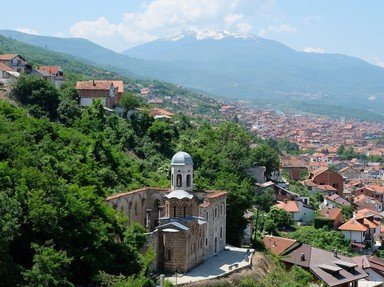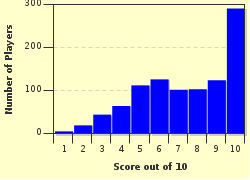Quiz Answer Key and Fun Facts
1. Kosovo is located on one of Europe's major peninsulas. On which peninsula can it be found?
2. On which of these seas does Kosovo have a coastline?
3. The climate of Kosovo can be described as humid continental. Which of the following is typical of this climate type?
4. Much of the area of Kosovo is mountainous. Deravica, its highest peak, is in the southwest, near the border with which neighboring state?
5. As well as mountains, Kosovo has two main plains, the Metohija Basin in the west and the Plain of Kosovo in the east. The Metohija Basin has a Mediterranean climate, and is a fertile area which produces a number of crops. Which of these is NOT found in the Metohija Basin?
6. Kosovo has a number of rivers running down from its mountains. The longest of these is the White Drin. What is unusual about the source of the White Drin River?
7. The capital and largest city of Kosovo, Pristina, used to have a river flowing through it. What happened to the Pristevka River during the 1950s?
8. The city of Pec is located near the source of the White Drin, close to the border with Montenegro. It is also near the Rugova Gorge, which was declared a Protected National Monument in 1988. What draws tourists to this canyon?
9. The town of Gadime, 15 km (9 mi) south of the Kosovan capital of Pristina, is the site of another major tourist attraction. Gadime caves are described as a marble cave system with aragonite speleothems in its northern passage. What will you see in the northern passage?
10. A significant aspect of Kosovo's population is its ethnic diversity. The flag designed for the Republic of Kosovo acknowledges this by displaying a star to represent each of the region's principal ethnic groups. How many stars are on this flag?
Source: Author
looney_tunes
This quiz was reviewed by FunTrivia editor
Pagiedamon before going online.
Any errors found in FunTrivia content are routinely corrected through our feedback system.

